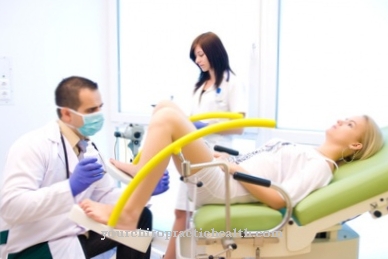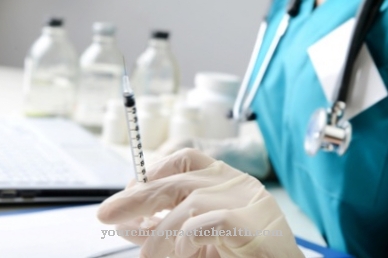While infectious diseases such as plague or cholera are generally no longer found in German latitudes, the proportion of degenerative diseases continues to increase. There are now various measures for Early detection of diseases. These should be able to determine changes in good time so that early treatment avoids a serious course.
What is disease early detection?

Early detection is by no means a precaution. While, for example, a healthy diet or the renouncement of tobacco can be viewed as part of prevention, early detection in the context of examinations should uncover complaints regardless of individual behavior. Numerous measures are offered by the health insurance company at regular intervals from a certain age. Normally, no additional payment is required for such an examination.
Examinations for early detection are used in all medical fields: they are intended to detect illnesses in the child during pregnancy, reveal the first signs of cancer or use blood tests to assess the risk of heart attacks and strokes. In general, however, these are not mandatory measures. Instead, the decision rests with the patient. He can perform the various examinations for early detection if necessary. The various processes do not always result in benefits. Accordingly, a trade-off between advantages and disadvantages must be considered.
Function, effect & goals
Measures for the timely diagnosis of various diseases are aimed primarily at people who externally show no signs of disease. In general, the German system for early detection is one of the best at European level. Early detection begins in pregnancy. The aim here is to uncover both the mother's and the child's complaints. Initially, the measures focus on the detection of high-risk pregnancies.
These include, for example, an ectopic pregnancy, which particularly endangers the mother. In general, all possible complaints should be uncovered and treated. For example, gestational diabetes can sometimes cause severe symptoms in mother and child. An early detection, however, helps to take care of the child in various ways so that it is not affected by the mother's high blood sugar. Ultrasound examinations are also used to check the well-being of the unborn child. These are carried out in the first weeks of pregnancy and repeated at regular intervals until the birth. The measures for early detection for expectant mothers can be found in the guidelines on motherhood.
Further appointments for early diagnosis of the child follow after the delivery. These are subdivided into examinations U1 to J2 and serve to discover diseases that can influence physical and psychological development. Age-related guidelines apply to most early detection measures. For example, young women aged 20 and over can be tested for cervical cancer. The examination takes place annually and consists of an inspection of the cervix, a smear and a palpation examination. From the age of 35, the health insurance company guarantees men and women screening for early diagnosis of skin cancer every two years.
Here the skin is visually examined for any changes. If there is a suspicion, this can be verified or falsified, for example, by means of laboratory tests. Overall, the examination includes all parts of the body, including the scalp, for example. From an age before about 50, examinations are relevant that are designed to diagnose any colon cancer at an early stage. Different measures are used here, such as a stool test or a colonoscopy. Blood tests can provide information about general health.
In particular, some values such as cholesterol and triglyceride are able to assess the risk of an impending heart attack. The general goal of early detection is therefore to discover diseases as early as possible and treat or delay them. In some cases it is possible to prevent disease from breaking out. The health should be largely preserved.
Risks, side effects & dangers
Early detection is not only beneficial, it can also be responsible for the damage that occurs. For example, regular mammography screening helps some women to detect breast cancer and in this way may save them from death. Nevertheless, such an examination is also a burden for the body due to the radiation. It cannot be ruled out that regular monitoring leads to complaints. Research has shown that about one in 10,000 women dies from exposure to radiation from screening, while others develop breast cancer.
Furthermore, prevention and early detection are often equated with one another, which leads to expectations. However, early detection measures cannot prevent disease. However, this may lead to incorrect expectations that lead to incorrect conclusions. A negative result may create a feeling of security. Not all methods are fundamentally reliable. In addition, future individual behavior usually plays a greater role than the perception of early diagnosis examinations. As part of colorectal cancer detection, a reflection rarely causes injuries and bleeding.
Early detection measures are not generally to be assessed as negative. However, there should be a balance between benefits and harm. Services provided by statutory health insurance companies usually have more advantages than disadvantages. A detailed research is useful for private offers. Early detection is particularly important for people in whose families there are cases of diseases that can be passed on to subsequent generations through inheritance.





.jpg)





















